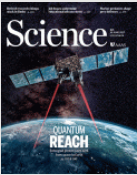 Stéphane Vassilopoulos (INSERM Researcher at the Myology Research Center at the Institute of Myology) participated in the discovery of a novel mechanism of cell migration. In collaboration with researchers from the Gustave Roussy Institute and the Institut Curie, he has demonstrated a new mode of adhesion and movement of the cell in a three-dimensional collagen matrix. This study was published in the journal Science*.
Stéphane Vassilopoulos (INSERM Researcher at the Myology Research Center at the Institute of Myology) participated in the discovery of a novel mechanism of cell migration. In collaboration with researchers from the Gustave Roussy Institute and the Institut Curie, he has demonstrated a new mode of adhesion and movement of the cell in a three-dimensional collagen matrix. This study was published in the journal Science*.
How does cell migration occur?
Migration is a normal phenomenon that occurs continuously in healthy cells, but it is also present in pathologies such as cancers: metastases involve cells that migrate abnormally in their environment.
The mechanism of migration occurs in two stages: adhesion then movement. It is well known that adhesion takes place in 2D, however, cell migration in a 3D environment is still controversial. How can this be explained? The hypothesis was, therefore, to look at how cancer cells move in a 3D collagen matrix. It so happens that clathrin is involved in this mechanism.
What is clathrin?
Clathrin has been known since the 1960s for its role in endocytosis, i.e., ingestion of nutrients, e.g. iron or cholesterol, into the cell via small sacs (vacuoles). However, its role in adhesion to the extracellular matrix by means of clathrin-coated pits has since been acknowledged. Interestingly, these clathrin-coated pits are found in collagen fibres outside the cell.
What have you found?
We made three successive discoveries. Using fluorescence techniques, the Gustave Roussy team first showed that clathrin pits are important for the migration of cancer cells in a 3D matrix. Secondly, thanks to a new ultra-high resolution electron microscopy technique, we have shown that in fact, not vesicles or pits, but tubes of clathrin wrap around and pinch the collagen fibre. Finally, we realised that it is not clathrin that is essential for adhesion, but adaptor proteins called AP-2.
Will you continue working on clathrin?
Indeed, in 2014 we showed that in healthy muscle cells, clathrin forms plaques that allow to organise the cellular skeleton. Our research aims to prove that these plaques constitute a platform for the transmission of signals (or “sensors”) to the nuclei of the muscle cells. This feature is defective in many myopathies where there are defects in mechanotransduction, coupling between contraction and gene regulation.
Interviewed by Anne Berthomier
